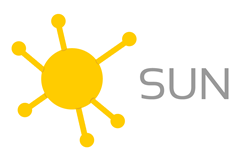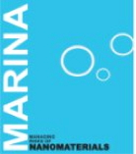Environmental Nanosafety
Research activities span from characterization of engineered nanomaterials in products and environmental media along life cycle stages to human health as well as ecological risk assessment in order to support sustainable manufacturing and use of nanotechnologies. The aim is to improve our understanding of release, fate and transport of engineered nanomaterials and related exposure scenarios as well as toxicological effects to human health as well as the environment, and to develop and apply adequate methodologies for a sound risk assessment.
Non-conventional ways of addressing potential risks (e.g., Weight of Evidence approaches, Expert Elicitation, Multi Criteria Decision Analysis techniques) are adopted, thus taking into account the deep uncertainties that currently pervade every step of the risk assessment procedure, especially when applied to nanomaterials, and implemented into user-friendly software-based decision support systems.
Climate Change Risk Assessment and Management
The primary aim of the research unit is to develop and apply methodologies for the analysis of environmental impacts and risks related to climate change and natural hazards. Interdisciplinary approaches and tools (e.g. risk and vulnerability assessment, multi criteria decision analysis, spatial indicators, decision support systems, ecological risk models) are employed for the assessment of impacts associated to one or more environmental stressors at different spatial and temporal scales (e.g. climate variability and change, chemicals, land use changes). Particular emphasis is given to the development of Regional Risk Assessment (RRA) and Multi-Risk Assessment (MRA) methodologies able to consider the complex relations between multiple hazards and exposed receptors on different natural and human systems. Research activities are also devoted to the assessment of the consequences of climate change on environmental fate and transport of chemicals and on the evaluation of related risks for ecological and human systems.
All the research products are implemented in GIS-based Decision Support Systems (DSSs) that guide stakeholders and decision makers in the spatial analysis of the potential consequences associated to climate change and in the definition of suitable risk management and adaptation options.
The interdisciplinary work is carried out in collaboratio with research groups from the Euro-Mediterranean Centre on Climate Change (CMCC, www.cmcc.it) and the Venice Centre for Climate Studies (VICCS, http://www.unive.it/nqcontent.cfm?a_id=172748).
Environmental Chemical Contamination
The research activities focus on the development and application of methodologies and tools for the assessment of risks and impacts of chemical substances on ecosystems and human health, in order to support the sustainable management of contaminated areas and natural resources. Our research activities include:
- development and application of methodologies and tools for ecological and human exposure and risk assessment for contaminated areas (soil, freshwater and groundwater);
- development and application of regional risk assessment procedures for the prioritisation/optimisation of sustainable solutions for the rehabilitation of contaminated sites and brownfield sites;
- sustainability assessment of remediation technologies;
- development of Decision Support Systems (DSSs) to support and improve the decision-making process in contaminated sites assessment and management;
- integration of environmental and socio-economic information by developing dedicated Multi Criteria Decision Analysis (MCDA) methodologies to support end-users and decision-makers in the decision- making process;
- provision of regulatory and methodological support in the implementation of the new European Regulations such as REACH (Registration, Evaluation and Authorisation of Chemicals) and CLP (Classification, Labelling and Packaging of substances and mixture).
NANORESTART – NANOmaterials for the REStoration of works of ART
EU H2020 project started on 1st June 2015 and lasting 36 months.
Currently there is a lack of methodologies for the conservation of modern and contemporary artworks, many of which will not be accessible in very short time due to extremely fast degradation processes. The challenge of NANORESTART (NANOmaterials for the REStoration of works of ART) will be to address this issue within a new framework with respect to the state of the art of conservation science. NANORESTART is devoted to the development of nanomaterials to ensure long term protection and security of modern/contemporary cultural heritage, taking into account environmental and human risks, feasibility and materials costs. The market for conservation of this heritage is estimated at some €5 billion per year, and could increase by a significant factor in the next years due to the wider use of nanomaterials. The new tools and materials developed will represent a breakthrough in cultural heritage and conservation science and will focus on: (i) tools for controlled cleaning, such as highly-retentive gels for the confinement of enzymes and nanostructured fluids based on green surfactants; (ii) the strengthening and protection of surfaces by using nanocontainers, nanoparticles and supramolecular systems/assemblies; (iii) nanostructured substrates and sensors for enhanced molecules detection; (iv) evaluation of the environmental impact and the development of security measures for long lasting conservation of cultural heritage. Within the project the industrial scalability of the developed materials will be demonstrated.
NANORESTART gathers centres of excellence in the field of synthesis and characterization of nanomaterials, world leading chemical Industries and SMEs operating in R&D, and International and European centres for conservation, education and museums. Such centres will assess the new materials on modern/contemporary artefacts in urgent need of conservation, and disseminate the knowledge and the new nanomaterials among conservators on a worldwide perspective.
Link http://www.nanorestart.eu/
NanoFASE – Nanomaterial FAte and Speciation in the Environment
EU H2020 project started on 1st September 2015 and lasting 48 months.
NanoFASE will deliver an integrated Exposure Assessment Framework, including methods, parameter values, model and guidance that will allow Industry to assess the full diversity of industrial nano-enabled products to a standard acceptable in regulatory registrations.
Methods to assess how use phases, waste streams and environmental compartments (air, soil, water biota) act as “reactors” in modifying and transporting ENMs will be developed and used to derive parameter values. Our nanospecific models will be integrated with the existing multi-media fate model SimpleBox4Nano for use in EUSES and also develop into a flexible multi-media model for risk assessment at different scales and complexities. Information on release form, transformation and transport processes for product relevant ENMs will allow grouping into Functional Fate Groups according to their “most probable” fate pathways as a contribution to safe-by-design based on fate.
Methodology: Inventories of material release forms along the product value chain are established. We then study how released ENMs transform from initial reactive states to modified forms with lower energy states in which nanospecific properties may be lost. Transport studies assess material fluxes within/between compartments. The experimental work underpins models describing ENM transformation and transport. Open access is provided to the models suitable for incorporation into existing exposure assessment tools (e.g. SimpleBox4Nano) and for more detailed assessment. Framework completeness is validated by case studies.
Impact: Identified links between ENM material properties and fate outcome (e.g. safe-by-design).
Improved representation of nanospecific processes in existing key fate and exposure assessment tools (e.g. SimpleBox4Nano in EUSES). Contribution to standardization. GIS framework to support predictive assessment, catchment and point source management of ENM releases.
SUN – Sustainable Nanotechnologies
EU FP7 project started on 1st October 2013 and lasting 42 months.
SUN (Sustainable Nanotechnologies) is the first project addressing the entire lifecycle of nanotechnologiesto ensure holistic nanosafety evaluation and incorporate the results into tools and guidelines for sustainable manufacturing, easily accessible by industries, regulators and other stakeholders. The project will incorporate scientific findings from over 30 European projects, national and international research programmes and transatlantic co-operations to develop (i) methods and tools to predict nanomaterials exposure and effects on humans and ecosystems, (ii) implementable processes to reduce hazard and exposure to nanomaterials in different lifecycle stages, (iii) innovative technological solutions for risk management in industrial settings, and (iv) guidance on best practices for securing both nano-manufacturing processes and nanomaterials ultimate fate, including development of approaches for safe disposal and recycling. In summary, SUN stands for an integrated approach for the long-term sustainability of nanotechnologies through the development of safe processes for production, use and end-of-life processing of nanomaterials and products, as well as methods reducing both adverse effects and exposure to acceptable levels.
MARINA – Managing Risks for Nanomaterials
EU FP7 project started on 1st November 2011 and lasting 48 months.
While there are standard procedures for product life cycle analysis, exposure, hazard, and risk assessment for traditional chemicals, is not yet clear how these procedures need to be modified to address all the novel properties of nanomaterials. There is a need to develop specific reference methods for all the main steps in managing the potential risk of ENM. The aim of MARINA is to develop such methods. MARINA will address the four central themes in the risk management paradigm for ENM: Materials, Exposure, Hazard and Risk. The methods developed by MARINA will be (i) based on beyond-state-of-the-art understanding of the properties, interaction and fate of ENM in relation to human health and the quality of the environment and will either (ii) be newly developed or adapted from existing ones but ultimately, they will be compared/validated and harmonised/standardised as reference methods for managing the risk of ENM. MARINA will develop a strategy for Risk Management including monitoring systems and measures for minimising massive exposure via explosion or environmental spillage.
Link http://www.marina-fp7.eu/
ECONANOSORB
The main objectives are: supporting and improving human and research potential, expanding research cooperation in European research area, spreading the output of the research on the both European and international level. Some of the project outputs are exchanging knowhow with experienced research entities in Europe, Russia and Ukraine organizing conferences, creating strategic research plan for forest products based sector, improving tools for research results dissemination and online service for forest based industry sector. Increasing production of wood processing industry within Europe, with limited resources of renewable wood raw material, creates needs for more efficient, effective and knowledge based utilization of this raw material.
The project consists of the following work packages: Preparation, characterization of nanomaterials from natural and synthetic ionites for adsorption of industrial toxicants;
Preparation, characterization and application of combined adsorbents on the base of carbon nanomaterials; Application of nanosorbents for wastewaters and air purification and utilization in nanocomposite materials; Development of a sensor of industrial toxicants and biomedical devices on the base of nanomaterials; Risk and impact assessment related to production and application of nanomaterials in the wood industry as well as Project coordinationDescription (up to one page)



